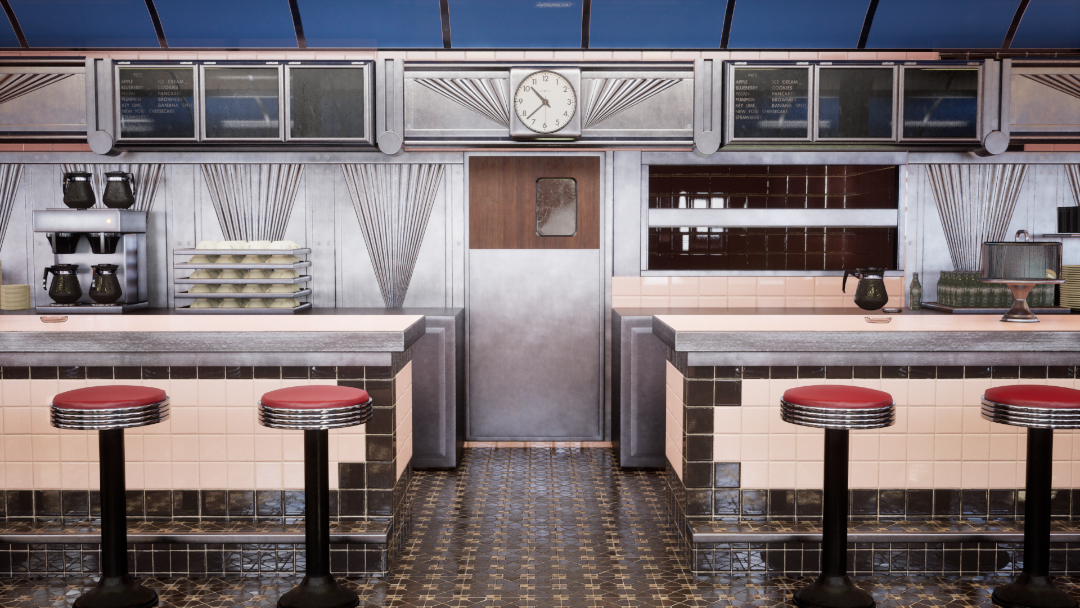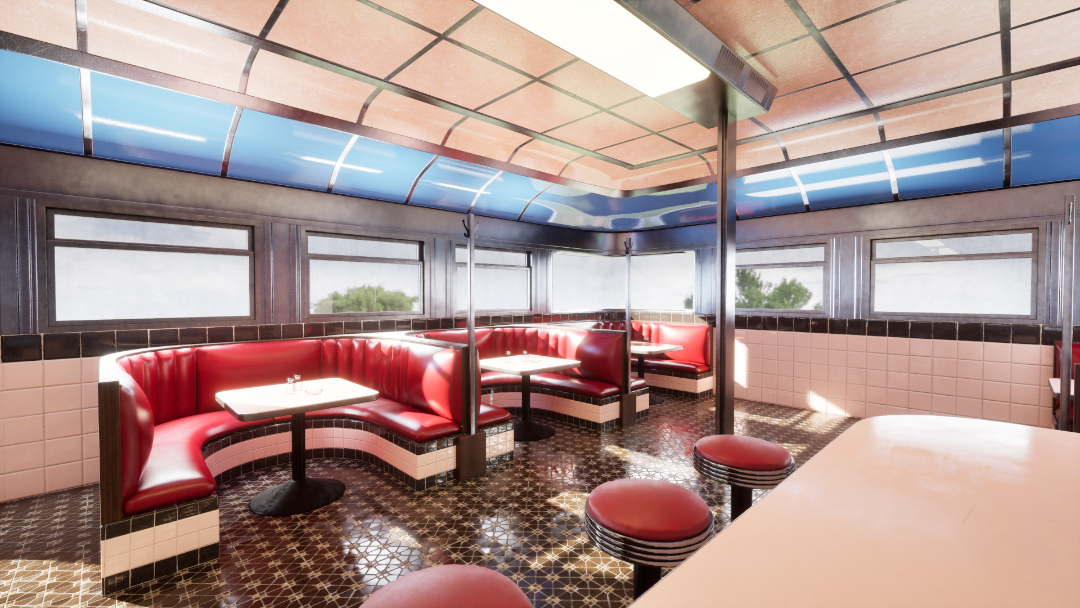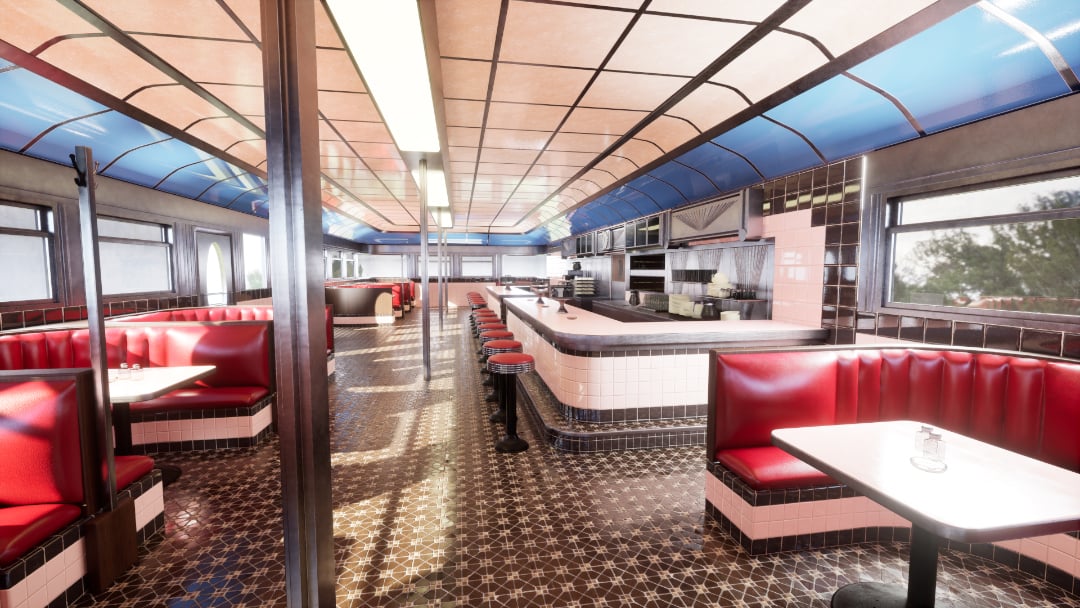The BRAWL² Tournament Challenge has been announced!
It starts May 12, and ends Oct 17. Let's see what you got!
https://polycount.com/discussion/237047/the-brawl²-tournament
It starts May 12, and ends Oct 17. Let's see what you got!
https://polycount.com/discussion/237047/the-brawl²-tournament
Feedback please for US diner
I've been studying game design part-time for the last six months and
have created my first environment, which is a classic US diner. I would
really appreciate any constructive feedback, as I'm still in the
learning process. I'm planning to submit this by the 28th, so any
insights would be incredibly helpful. Thank you!







Replies
https://www.google.com/maps/uv?pb=!1s0x875211a8730c8eb7:0x15177ebe80ae35a0!3m1!7e115!4s!15sCgIgAQ&imagekey=!1e10!2sCIHM0ogKEICAgICn5PTnHw
The whole thing seems overly-lit to me, and the ceiling does seem too shiny.
excellent thanks Eric!
I would recommend starting with an entirely dark scene and just place the key lights - in your case probably the ceiling light and the windows. Depending on the time of day you might want to add a directional light with a correct color temperature outside so light falls in from the windows. Once you have your main lights you can start working on your bounce light - either by using settings in Lumen/bake lightmaps or by placing additional (low intensity big attenuation) lights in dark corners. You don't want pitch black shadows but also still have a difference in brightness to differentiate key and fill lights which will make your entire scene feel less flat.